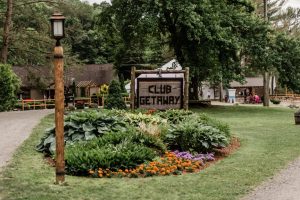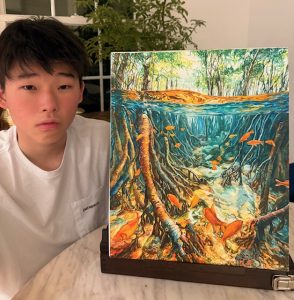Aquaponics: The Future of Farming
January 4, 2023
Aquaponics is an alternative method of sustainable farming that does not require the use of soil. One of the biggest issues today is climate change—a problem that impacts the entire world in many different aspects, one of them being food supply. As the climate worsens and extreme weather events such as droughts occur more often, it will become harder for food to be grown using traditional farming methods. Instead, aquaponics offers a more sustainable method of giving plants nutrients from the waste produced by aquatic animals such as fish.
Students who are interested in learning about this alternative agricultural method while having a good experience should consider taking the ‘Aquaponics’ Wednesday project that is offered by Ms. Zepatos.
Rishabh Singh, a BCA student who previously took the aquaponics project said, “Not only did I learn a lot about the sustainability and science behind aquaponics, but I also was able to experience this farming method hands-on.”
And that is the unique experience that this project offers—students learn more about the specifics of aquaponics, and they actually get to experience this method hands-on in BCA’s very own Environmental Science Center.
At the beginning of the project, students get the opportunity to choose their own seeds to plant and are assigned a fish-tank to grow their plants in. Each week, there is time to gather data, such as how much the plants grew from the previous week, and improvements are made to the system for better efficiency in the future.

There are also numerous other tasks that students will be assigned weekly. For example, students may have to clean out the fish tanks occasionally and refill them with water (this involves catching and transferring the fish which is no easy feat). Other tasks include watering the plants in the greenhouse and working outside in the garden.

Rishabh Singh said, “There wasn’t too much of a standard learning-based classroom environment. For two periods, we got our hands dirty with working with the plants, the fish, and the garden. I really enjoyed the relaxing environment and was still able to learn a lot.”
At the end of the trimester, students share their results with the class in the form of a group presentation. In particular, students get the chance to inform their fellow classmates about the overall growth of their plants.

“I think something that was really unique about this project was that I was able to actually obtain tangible results in the form of the fully grown plants,” said Rishabh.
Of course, it would be a shame to put all the plants that had been grown over the course of the entire trimester to waste. In the last class of the project, students get to eat the plants that they grew.
Common types of plants that are grown (and eaten) in this project include lettuce, tomato, kale, basil, and spinach. The plants are cleaned and mixed into a salad, and for students who may not be too keen on eating just vegetables, Ms. Zepatos may throw in a couple of baked surprises.
Rishabh said, “For me, this was one of the best parts of the project—not only was there free food, but it was the vegetables that we grew ourselves. It was really satisfying to see (and eat) the culmination of the work I did over the course of the trimester.”





